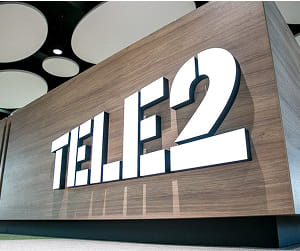Discover how leading companies across industries are achieving efficiency, savings, and innovation with Zinit’s AI-powered procurement platform
Transforming Procurement: Real Stories, Real Results

“White” competitive procurement in seven days: how we redesigned processes
ASTON - food products and food ingredients
Commercial companies do not have any external regulatory requirements, and you can buy almost anything, from anyone and choose your supplier as you like. And if you are not going to IPO or are not seriously concerned with questions like: “How would the procurement department work more transparently?”, then it is usually a trade-off between simplicity of the procedure and the choice of suppliers. - then it's usually a trade off of procedural simplicity for price. Because you can just call the supplier and just order. Quick, convenient, minimum body movements, but no one knows how much the final price corresponds to the market
= 10% more expensive.
= 15% cheaper.
We have redesigned the processes so that the procedure remains as simple as possible, but the counterparties actively bargain with each other for the offer.
Aston is one of the largest food and ingredient companies in the country, including being the first to export vegetable oils. We have 20 divisions, production facilities, elevator complexes, port terminals, tankers, bulk carriers, and trading offices in Switzerland, Turkey, Singapore and Dubai. Our indirect purchases include spare parts for equipment, fleet and agricultural machinery, design, construction, equipment repair, road repair and other services.
Quite soon after the formation of the first supplier base we started to have conflicts and misunderstandings after the selection of contractors for supplies. The thing is that we made a request for proposals by mail and phone, received in response options with prices, compared them and chose a supplier. That is, it was an auction with a single step. And not all suppliers knew that it was an auction.
Already after the selection, everyone would call us and say: “Tell us what offer you were given. We will give you a better one.” Communicating with each supplier takes time, everyone gets nervous. As a result, when a certain contractor is chosen, calls with resentment start. Because, as it turns out, someone could have won and was ready to move up the price, but simply did not know that this was the situation. As a result:
- Suppliers are not satisfied with our transparency and non-obvious selection criteria.
- We are not satisfied with the final price, because the suppliers could clearly give lower prices, as they often say after the procedure is completed.
The right solution would be to bring them together in a single negotiation room, but this does not solve all related problems and is time-consuming. The second correct solution would be to send them to an electronic trading platform where they would see each other's offers.
But the suppliers did not want to go to the platforms
On the one hand, it was necessary to trade on ETPs, but on the other hand, suppliers simply did not want to enter them. Suppliers simply did not want to deal with any platforms, because they required complicated registration, registration fees, participation fees, and so on. A forum or a messenger group would have been a better fit, perhaps. We even thought about it seriously until we got acquainted with the Zinit service.
Zinit is an electronic trading platform where everything is as simple and intuitive as possible and where there are already suppliers.
At first, we saw it as a place where we could find new suppliers
It's quite simple: since we were just creating processes and just recruiting a supplier base for indirect purchases, we had to either make a lot of cold contacts or find places where there were already suppliers. In some areas, there are sites that bring together professionals (for example, for printed products), but in most cases, small suppliers are not concentrated anywhere. There was already a base on Zinit - not a very large one at the time (it grew later), but we were happy with that.
We came to the site and started organizing our purchases. After the first few procedures, it turned out to be very easy to add our existing contractors, and the site became more of a tool for negotiating them, which saved us a lot of time and nerves.
Procurement is simple, participation is free, and registration takes a couple of minutes: we sent a link and said that proposals should now be submitted here. In the end, everything becomes clear to everyone. There are clear rules for evaluating a proposal. Contractors can see who has won. I can see how suppliers bargain. It is important that it is not the company that wins, but the proposal. All contractors understand whether they could have given cheaper or not, whether they could have taken this lot or not. They have no questions for me as the organizer of the bidding.
Our existing suppliers at first did not want to enter Zinit, because they were afraid of paid participation, filing tons of documents, processing for months: both we and they had experience with other ETPs. Although this is not the case with them. We tried trading both on the platform and “over the phone”, but we decided to work only with the platform. If you don't use the platform, you can request a bid in person. After a few hours, the clarification calls start. If there are a lot of participants, there are a lot of calls, and after the selection of the contractor, all those who did not win, believe that we as buyers have chosen the favorite according to our criteria, and not according to market criteria.
Any non-transparent selection of a contractor is perceived as nepotism
Last year, when we started working with Zinit, we looked for suppliers for those lots for which we did not have a verified database of contractors or where we were not sure of the price. At the same time, we worked with other sites, and with suppliers directly, trying all sorts of things. As we gained experience, we began to more or less establish processes, consolidate good practices and transfer more purchases to the simplest procurement platform.
From my point of view, 80% of the success of working with a trading platform is how convenient it is for a procurement employee to place his orders on the platform. And how convenient it is to invite a supplier to this procurement. For us, the remaining 20% is the fullness of suppliers of different assortment of goods and services.
Working on the platforms requires attention to the TOR
There are simple purchases where it is enough to specify the make or model. In principle, it is possible to have a very long conversation with the counterparty about a gearbox, despite the fact that you have specified the model, make and everything else. Because, in addition to the model and make, there are a number of other nuances: connection size, mounting size and so on, which are not specified in the article, drawing number or elsewhere.
But usually (especially when it comes to services) you have to specify the task and specify the acceptance criteria in some detail. For example, construction and repair services are complex: the completeness of the offer and its correctness directly depend on how correctly the terms of reference are drawn up. If it is not drafted accurately, questions arise. We have come to the point that we play the bidding on the site only with those contractors who visited the object before giving a proposal. For this purpose, in the questionnaire on Zinit we write a separate column for filling in the question about visiting the object. In general, the questionnaire tool is very convenient.
One week per procedure
In the case of purchasing a spare part, the task is formed in a day, then we give it on the site to those suppliers we know. They offer prices.
If it is something big (for example, a whole line for a factory), then, of course, the procedure takes longer. It took us more than a week to agree the ToR for a line just internally.
In general, we have many divisions: there are several plants that deal with extraction of vegetable oil, there are agricultural enterprises, there are transshipment complexes, there are just elevators, fleet. Each of them uses one or another kind of equipment. The purchase requisition is usually made by mechanics or engineers, in general - by the end customer. We give them a ready-made requisition form, they just fill in each item in detail. The budget amount, the date by which they need to deliver the equipment, and the requirements are specified. Then all this is coordinated with the financial services: they confirm that there is a budget. The head of the Financial Responsibility Center, heads and directors of branches in this case confirm that yes, we need to buy this equipment. Then this request, agreed by all, comes to us in procurement. The requisition is distributed to the staff in the procurement area. The employees accept the application into work, assess the completeness and correctness of the information provided. If everything is good - they put it on the electronic trading platform. Currently it is only Zinit. They quickly fill in the form, collect bids, and finalize the procedure. Based on the results of the tender on the electronic trading platform, a memo is written to the deputy general manager, which confirms one or another option for the work.
Suppliers ask their questions in a chat room in the form of Zinit. There is a general chat room, there is a chat room direct between the contractor and the tender owner, and a general chat room where all contractors and customers are. Questions are asked there, we address them to the mechanic or the chief engineer. But they are answered within a day or two at the most. Questions mostly arise when not all the information is provided: realizing what the questions may be, we try to get all the information at once. In the ToR, there may even be drawings of what is needed, how detailed.
The procedure is 21 working days per procurement.
The average time to Zinit is 12 working days
To Zinit - 7 working days
It took time to put together the monitoring. It used to be an Excel spreadsheet that had to be filled with different information on the results. Now we upload almost the same table from the site. Plus, it is convenient to work with many requests at once; at the same time one employee has about 20-30 requests in work. Previously, there were many more requests in the work of employees, and they piled up. Employees did not have time to process them, because in order to take a request into work, you need to have time for mailing and a pool of suppliers. You need separate dispatch tools, separate vendor accounting and understanding of what went to whom. There are a lot of unnecessary routine actions that the site automates. Plus mail, in which you also need to create about 20 folders for each purchase. A person could have 60-80 requests, and 40-50 of them were just waiting.
Working on the site gives us the opportunity to hold an open tender available for participation by any company, be it companies we have worked with before or new companies that have found our tender on the site.
There were 8-10 suppliers for an open procedure
It became 20-50 suppliers per open procedure.
We have unified all the processes for medium-sized purchases, i.e. suppliers are bidding themselves, bids are sent out themselves, and so on. This makes it possible to process bids for large amounts in more detail, from which, in percentage terms, we can get more profit.
